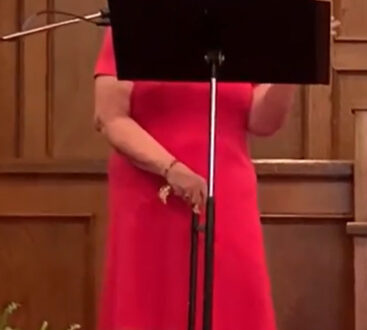9 Steps to Biblical Manhood and Womanhood
More than 35 years ago when I started dating a guy named Gary Glahn, he liked to grow bonsai trees and cacti. For my high school graduation, he sewed us matching down vests—that we still wear—from a kit. During my freshman year of college, he drew me a rose and shaded it perfectly with colored pencils. I hung it on the wall in my dorm. His plant growing, his sewing skills, and his drawing all got him labeled as a sissy.
One of my introverted male students told of a time when he visited a church for the first time. He wanted to sit back, observe, and get a feel for whether this place might be a good fit for his gifts. During the adult Bible fellowship, the larger group divided up into smaller groups, and he ended up as the lone male with a few women who were regular attenders. These women handed him the teaching guide and expected him to lead the discussion. He was mortified that they deemed adhering to strict gender roles more important than making him feel welcome and comfortable as a guest–not to mention checking out his theology.
A former fellow employee is a single guy who’s an artist. An introvert, he dislikes sports and prefers to create. People ask him if he’s gay. He’s not.
When my husband goes to Kenya, he sees women thatching the roofs of huts. In parts of Africa, thatching rooftops is “women’s work.” But in America, people often describe a female roofer as “doing a man’s job.”
Among American married couples, the husband may drive the car because he’s the guy taking the lead. In some countries, the wife drives because she’s taking on the servant’s role.
Some years back, a deacon at a church we attended filed for bankruptcy. This man had a nice pool in his yard. The leaders told him they didn’t want him to file. Instead, they wanted to take up an offering, organize garage sales, and come up with all manner of creative ways to help him pay his debts so that the name of Christ would not be slandered. He refused. So the church asked him to step down until he could get a grip on his finances. He argued, “If a guy can’t lead, there’s nowhere for him to serve.” So he left.
I sit on the fence between introvert and extravert. One of my spiritual gifts is teaching. But my husband is definitely an introvert, and his gifts lie in administration. I usually find myself in front of a crowd; he heads for the accounting office. In the first years of our marriage, people assumed we suffered from role reversal…that I “wore the pants in the family.” After all, they reasoned, he was supposed to be visible, and I was supposed to be invisible.
Each of these anecdotes reflects a distorted view of gender. What people (especially middle-class, American evangelicals) have failed to take into account in each case is that when we put men and women in boxes according to narrowly defined definitions of masculinity and femininity, we deny the full and dynamic range of the personhood God created. Yes, men and women are different. But the moment we insist on how our sex differences must work themselves out socially—saying things like “women are more emotional,” “men are more detached,” “women need love,” and “men need respect”—we stuff people into boxes. Our theology should be broad enough to consider normal the relatively unemotional woman and the man who desires affection more than respect —or any cultural variation of gender role outside the USA. If it’s biblical, it’s global.
The way to become our most fully flourishing male and female selves is not for women to wear frilly clothes and men to fart, grill steaks, rescue damsels, kill Bambi, and retreat to their man-caves—despite what Christian books on gender might suggest.
Interestingly, the Bible never outlines what feminine and masculine behavior looks like. Jesus cooks; Jael wields a tent peg; Paul weeps; Miriam prophesies. Indeed, the Bible includes no exhortations to pursue manhood and womanhood. Rather, the apostles and prophets focus on something else: the fruit of the Spirit 1– love; 2–joy; 3–peace; 4–patience; 5–goodness; 6–kindness; 7–gentleness; 8–faithfulness; and 9–self-control. And experience tells me that the more someone pursues Christlikeness, the more fully he or she flourishes as a man or as a woman.
Our fully actualized masculine and feminine selves develop as by-products of our spiritually developing selves. If we make it our goal to be masculine or feminine, we miss Christlikeness. If we set our focus on being like Christ, we discover to our delight that we become the men and women God created us to be.




5 Comments
Lael Arrington
Well said, Sandra. Although would you grant that…
…the NT does "outline what (some) feminine and masculine behavior looks like" in NT churches?
Have you looked at Nancy Leigh DeMoss' True Woman Bible study series? Any thoughts on the divine design ideas there?
Christina Wilson
Sumner and DeMoss
I really enjoyed reading Sandra's blog article, as it provides a refreshing breath of hope towards keeping the younger generation in the church. Concerning Lael Arrington's suggestion of considering the views of Nancy Leigh DeMoss, I would like to add that anyone who reads DeMoss, whom I believe is not married, should also read Sarah Sumner in Men and Women in the Church: Building Consensus. Sumner is married, and she, her husband, their traditional pastor, and their other traditional church leaders have found a way for Sumner's God-gifted biblical skills of teaching to be used in a church setting that benefits the church's men, as well as its women. She knows her Bible as a well-educated theologian, yet she is able to break out of the kind of Pharisaical legalism often characteristic of DeMoss. It saddens me that in an era when young people are fleeing the church en masse, legalists are still picking apart the syllables and accent marks of what women may and may not do, rather than obeying the first and second commandments of our Lord: the commandment of love sums up all other laws.
Phyllis Neal
Biblical Roles??
Thank you, Sandra, for a very balanced article on gender roles. I was a "super duper" conservative complementarian until I went on mission trips. (Yes, if it's Biblical, it must be global!) I have seen different cultures demonstrate that much of what white, upper middle class, conservative Christians think of as a Biblical gender role is, in fact, American church culture and not Biblically prescriptive.
Ms. DeMoss, a lovely Christian woman, falls in the camp of the "new" Calvinists and is aligned with John Piper, The Gospel Coalition, and the Council on Biblical Manhood and Womanhood (Wayne Grudem). Those ministries are very strongly complementarian.
Pingback:
Pingback: